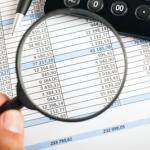Companies large and small spend countless hours every month developing, amending and updating the spreadsheets that...
 Spreadsheets are a great tool to build and maintain ad-hoc calculations, quickly draft a business plan and create good-looking reports. But when it comes to planning and budgeting in a complex business environment the flexibility of spreadsheets is often quick to become an obstacle instead of an asset in your planning process.
Spreadsheets are a great tool to build and maintain ad-hoc calculations, quickly draft a business plan and create good-looking reports. But when it comes to planning and budgeting in a complex business environment the flexibility of spreadsheets is often quick to become an obstacle instead of an asset in your planning process.
What characterizes a good planning, budgeting and forecasting process?
1. A budget should be a management tool
Planning, budgeting and forecasting is an advanced process. If it is supposed to add value to the company it must involve a number of people. For example, the sales planning process has to involve people who know the products and the customers. The production plan must involve the people who understand the, often complex, production capacity, processes and material requirements and planning for general resources must involve the right people.
The budget should not only be a source of an annual report for the board and bank. To achieve this it must be based on assumptions that take into account the external and internal environmental factors and it has to be easy to build scenarios that address changes. This calls for a streamlined process that is not too time-consuming.
2. Accuracy and assumptions
Accuracy is a big part of a good planning and budgeting process. Users should be able to trust the assumptions they use and those must be precise enough to reflect reality. The product mix is constantly changing, for example, so you have to be able to extract the true revenue and cost by product and product line. Furthermore, calculation errors, once they get into your model, will often affect the whole downstream process, igniting uncomfortable questions from experienced board members when you finally get to the all-important board presentation.
3. Workflow is important
As mentioned above it is very important that the people who know the business are involved in the planning process. It is also important and can give companies advantage, to use and advanced tool where the data is stored centrally, and the planners get access to the part of the business they are responsible for. Other important factors are that the tool reflects the workflow and best practices in work procedures, keeps track of who did what when, the status of the planning work and possibility to see the expected outcome. When the planning process has finished it should be easy to transfer the data for use in business reports for comparison.
Now, knowing spreadsheets, how well do they really fulfill all those criteria?
1. Spreadsheets are documents, not a database
A spreadsheet is not a database. Workbooks are documents, stored in your file system, they can get lost, copied and changed and often you end up with multiple versions of the truth. If you want to distribute your work the only way is to create multiple excel workbooks and then spend countless hours consolidating them, with mixed results.
2. Is error checking the best use of your time?
Everyone who uses spreadsheets for planning, budgeting and forecasting recognizes how easy it is for errors to find their way into the workbooks. Once you have an error in a complex workbook, let alone multiple interlinked workbooks, finding and correcting it can be a major headache.
3. A good budget has many levels and dimensions
To build a well-grounded budget or forecast you must be able to base it on sound assumptions. Since spreadsheets do not allow you to drill down, work at multiple levels or with multiple dimensions at the same time, you will have to rely on estimated averages for example when it comes to unit prices, utilization rates or the effects of currency changes or raw material prices to name some examples.
4. Your company is a repository of knowledge – Use it!
No single individual or a single department in a corporation has all the answers. The sales managers understand the clients, the marketing managers understand the brands, production managers understand the production requirements. Finance understands – well, finance. So why make them responsible for all the inputs? Is it perhaps because you use excel and preserving the integrity of the spreadsheets has become even more important than getting really value-adding inputs based on sound knowledge, not just last year’s figures?
Planning, budgeting and forecasting do not have to be an annual, time consuming, low value-added process. It can be a great tool to manage your business and avoid letting the ever-changing reality surprise you. But to do that you must turn away from spreadsheet-based budgeting – even though Excel comes almost free of charge. Your time and the success of your business are worth more.
Subscribe to
FP&A Trends Digest

We will regularly update you on the latest trends and developments in FP&A. Take the opportunity to have articles written by finance thought leaders delivered directly to your inbox; watch compelling webinars; connect with like-minded professionals; and become a part of our global community.



